Nuclear Safety Problems at North Korea’s Yongbyon Nuclear Facility?
Summary
Recent commercial satellite imagery indicates that North Korea may have experienced problems ensuring an adequate water supply essential for the operation of reactor cooling systems at the Yongbyon Nuclear Scientific Research Center. These difficulties resulted from the extensive rainfall and subsequent flooding in July 2013, which moved the main channel in the Kuryong River away from the water supply, filled the collection cisterns and ponds with sand and possibly destroyed pipes leading to them that had been laid along the river bottom. Because of these difficulties:
- The recently restarted 5 MWe plutonium production reactor may have been temporarily shut down or operated at a lower power level in early 2014 in order to repair problems with the secondary cooling system’s water supply.[1]
- North Korea quickly completed major water channel excavations and dam construction from December 2013 until February of this year to ensure adequate water would be available for the cooling system of the experimental light water reactor (ELWR) now nearing completion.
Despite these short-term fixes, the danger posed by an unreliable supply of water for the Yongbyon reactors remains, particularly since the channels and dam constructed are made from sand and could be washed away by future floods.
If the 5 MWe reactor’s secondary cooling system were to fail, so would the entire cooling system. The result would be a fire in the graphite core and the release of radioactivity. While North Korea’s experience operating this system would increase its chances of quickly shutting it down before a fire broke out, the reactor’s lack of airtight containment could lead to the escape of some radioactivity even in small accidents. As for the ELWR, Pyongyang has no such experience operating the new facility, the first indigenously built reactor of its kind in North Korea. The rapid loss of water used to cool the reactor could result in a serious safety problem.
Contrary to recent assertions by ROK President Park Geun-hye, a nuclear accident in North Korea would not cause damage worse than the Chernobyl disaster in 1986 because of the small sizes of Yongbyon reactors. However, a radioactive release in the atmosphere or river would cause an expanded local area of contamination. Also, Pyongyang’s likely lack of transparency could create a regional crisis, panicking the public in surrounding countries and raising tensions with governments anxious for further information.[2]
Cooling the 5 MWe Reactor
A key hurdle for North Korea in restarting its 5 MWe plutonium production reactor in August 2013 was reactivating the secondary cooling system for that facility. The system had been shut down since July 2007 and disabled since 2008, with the destruction of its cooling tower as a result of an agreement reached through the Six Party Talks. Hot water, used to cool the carbon-dioxide gas primary cooling system, had flowed from the reactor’s secondary system to the large tower and then was recycled back into the reactor. The tower also cooled the steam and hot water from the turbines that powered the electrical generators. Without the secondary cooling system operating, the primary carbon-dioxide gas cooling system would quickly become hot, causing the heat in reactor core to increase as well as a fire in the graphite moderators.
To accomplish the objective of restarting the 5 MWe reactor, rather than rebuild the cooling tower, in mid-2013, Pyongyang connected the pipes that originally went to the tower to new pipes being installed as part of the ELWR cooling system to ensure that the 5 MWe reactor had a backup supply of cooling water. One result of not rebuilding the cooling tower is that the North Koreans now need more river water. A new pipe was also constructed before the 5 MWe restart that dumps the steam and hot water from the turbines directly into the river.
Since the restart of the 5 MWe reactor took place a month after the July 2013 floods at the Yongbyon facility, the cisterns needed to collect the cooling water were already covered with sand. It is unclear why the North Koreans did not immediately clear them. But to temporarily access the water, they appear to have put in place two or three pipes from the pump house to a pond of open water 25 meters away (figure 1).
Figure 1. Temporary Fix to the 5 MWe Reactor’s Secondary Cooling Water Intake.
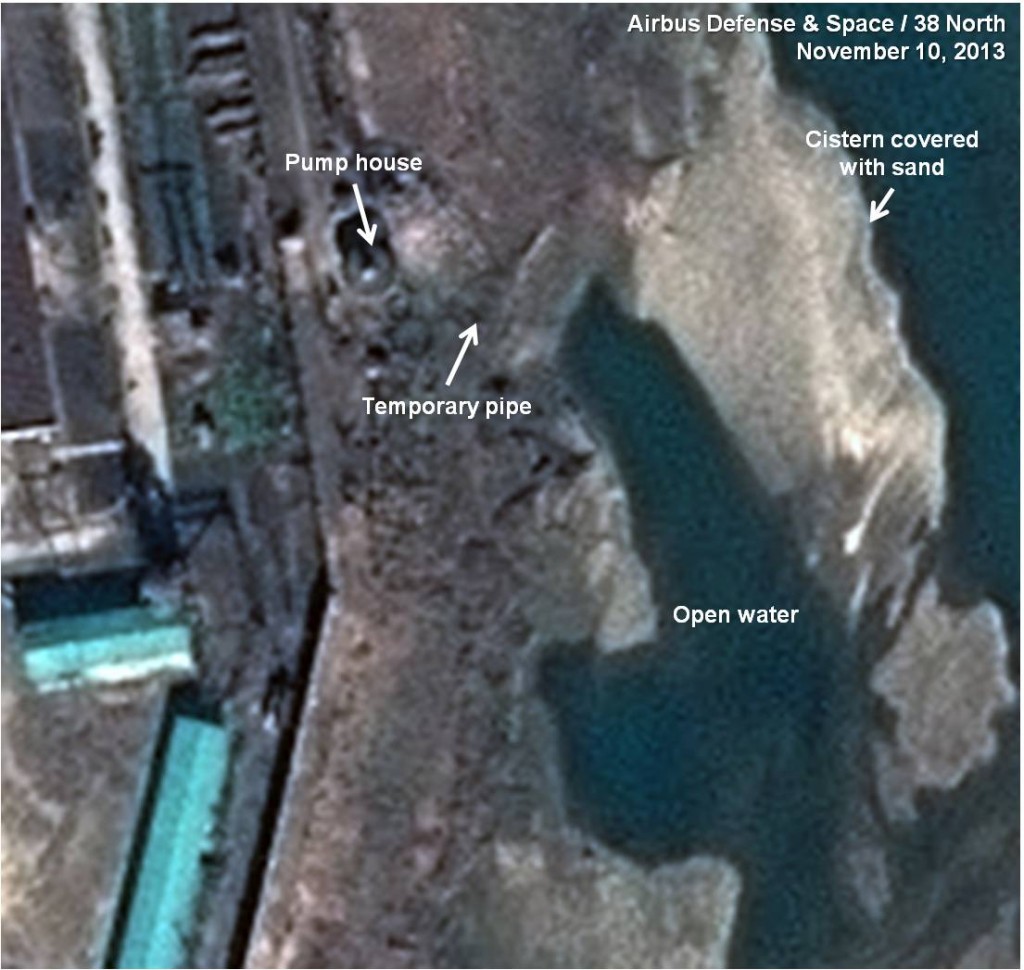
In January 2014 the cistern was dug out and was probably clear of sand by early February (figure 2).
Figure 2. Clearing Sand from the 5 MWe Reactor Water Intake Cistern in Early 2014.
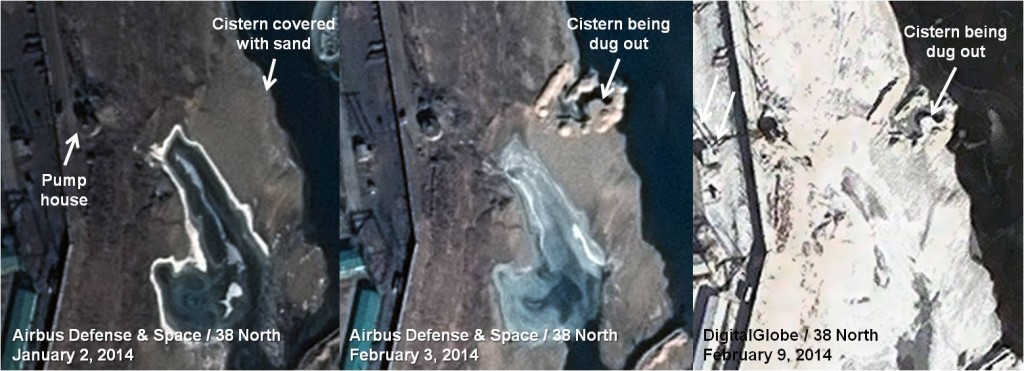
During this period, a combination of indicators from commercial satellite imagery points to an alteration in reactor operations, either operating the facility at a lower power level or shutting it down. They include:
- Imagery on February 3 showed a steam release from the turbine building (figure 3). That may indicate that the turbines were shutdown in preparation for the reactor shutdown and were releasing remaining steam to prevent excessive pressure buildup and possible leaks.
- Imagery from February 9, a few days after a snowfall, indicates a lack of snowmelt on the roofs of the reactor and surrounding buildings (figure 4). One possible explanation is that those buildings were not generating heat to melt the snow because the reactor had been shut down. This contrasts with previous imagery from late 2013 when the reactor was running, which showed snow that had fallen earlier was completely melted off the roofs of the reactor and surrounding buildings (figure 5).
- Imagery from February 9 also indicates what appears to be no hot foam or steam being released from the turbine building at the dumping site on the riverbank. Moreover, the waterway to and from the pond where the hot water is dumped is frozen, further indicating that none was running into the pond (figure 6). This is the only image since late August 2013 when the reactor restarted that foam was not observed (figure 7).
If the reactor was shut down or operated on low power, it seems to have been restarted by February 13, indicated by the reappearance of hot foam, and was operating as of early March.
Figure 3. Steam Release from the Turbine Building.
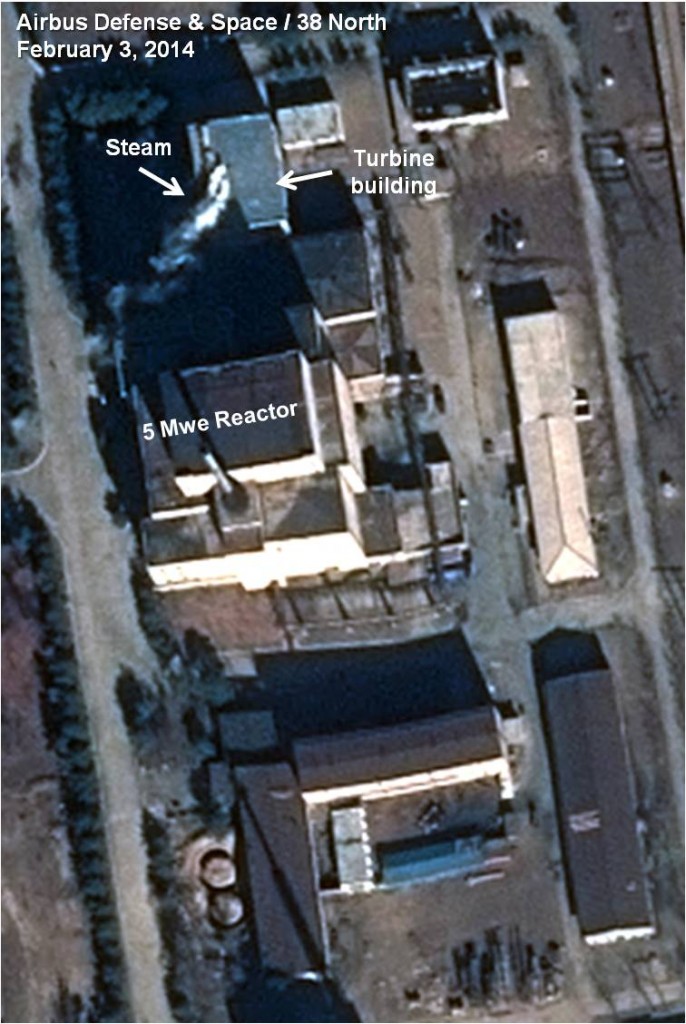
Figure 4. Lack of Snow Melt on the Roofs Indicates the Reactor is Not Running.
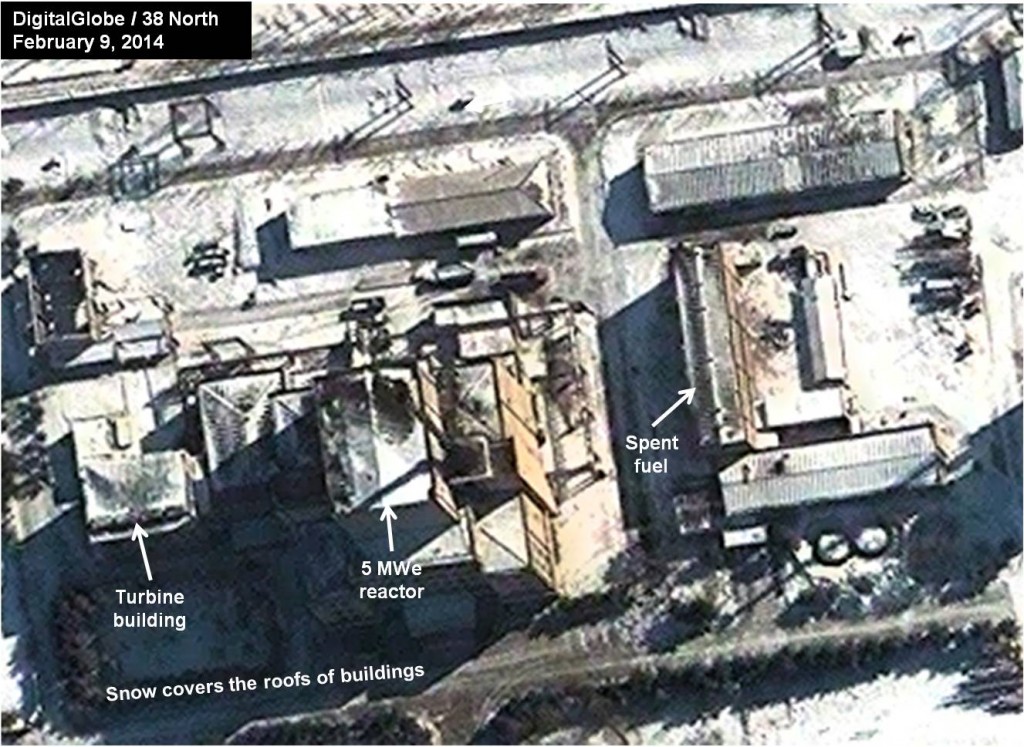
Figure 5. Snow Melt and Clearing at the Operating 5 MWe Reactor.
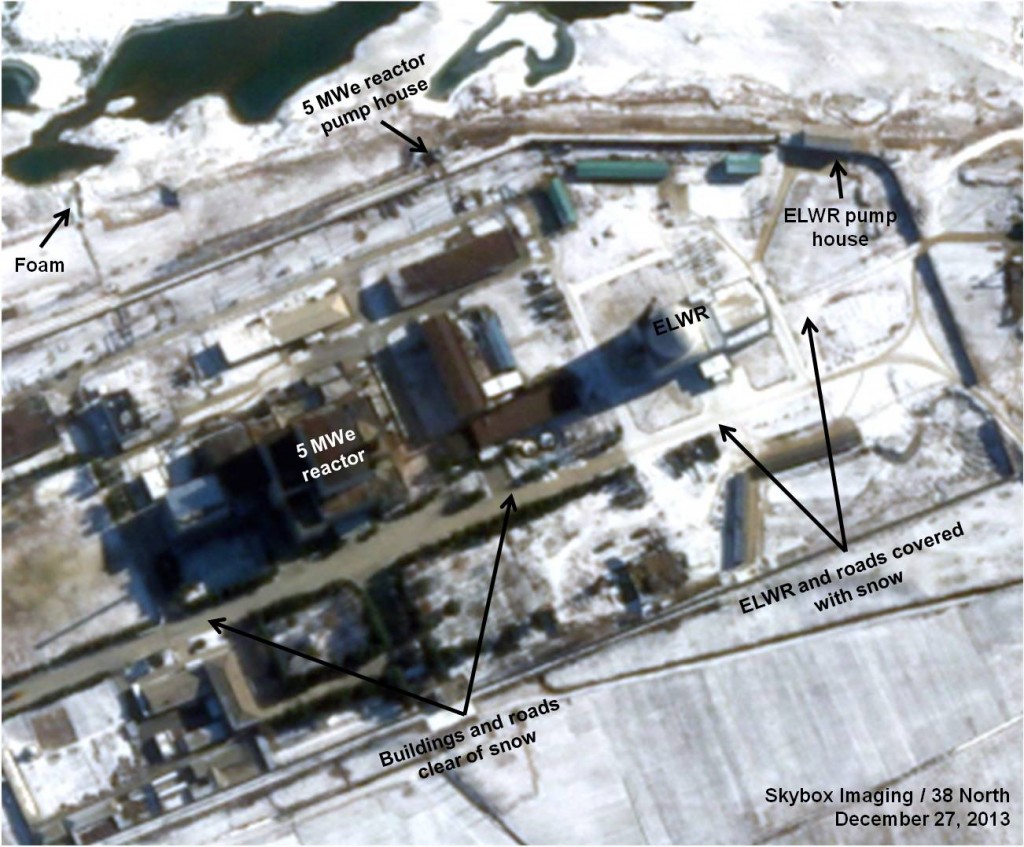
Figure 6. Lack of Hot Waste Water on February 9.

Figure 7. Hot Water (Foam) Indicating the 5 MWe Reactor is Operating.

Bolstering the ELWR Cooling Water System
The cooling system for the experimental light water reactor (ELWR) consists of a large onshore pump house and two cisterns in the river. In May 2011, two pipelines—one for intake and the other for dumping hot water into the river—were constructed and ponds for fresh water were dug around each cistern. With the flood in mid-July 2013, which dramatically changed the river landscape and damaged or destroyed parts of this system, plans for the ELWR cooling system (as well as for the 5 MWe reactor) appear to have been changed. The original ponds and channels were filled with sand by the flooding and the main river channel moved to the east. The cisterns for both the 5 MWe reactor and the ELWR were buried in the sand.
While two or three pipes to nearby open water were installed for the 5 MWe reactor—a temporary solution that appears to have provided adequate cooling water for four or five months—the fix for the ELWR cooling system was more extensive. Starting in December 2013, a channel was dug to bring water to the cistern nearest the pump house. On the bottom of the channel, a pipe was run from the cistern to open water. This may have also provided an emergency or backup source of water to the 5 MWe reactor while its water system was being dug out (figure 8).
Figure 8. Start of Construction to Repair the ELWR Water Cooling System.
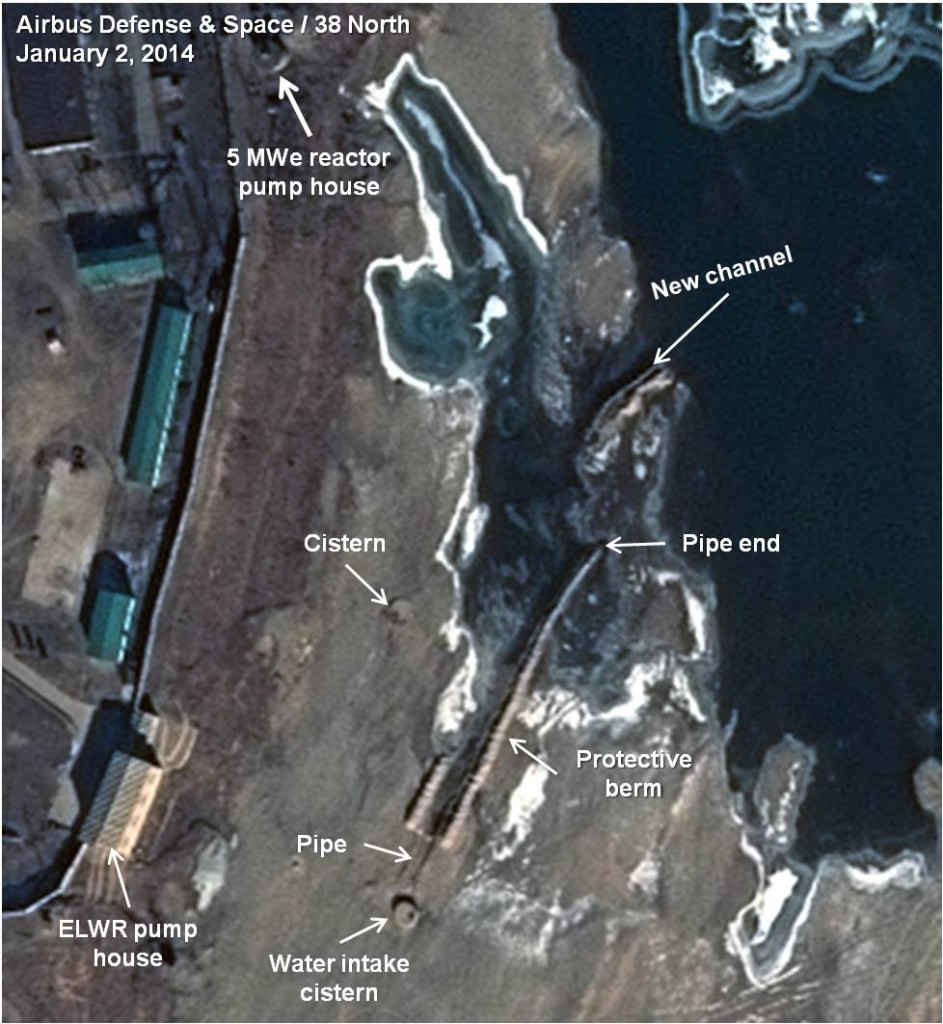
In addition, a series of channels were dug and an earth dam was built across the river intended to regulate the water level so the cisterns would always be supplied with water. Construction of the dam was underway in January 2014 and continued into early March, when it appeared finished. The two existing channels were widened and two new ones were dug. The river water outlet is located at the end of two of the new channels and probably has gates that allow the water height behind the dam to be regulated. One of the original ELWR cisterns remains buried in sand and has not yet been connected to the water (figure 9).
Figure 9. Newly Constructed Reactor Water Supply as of Early March 2014.
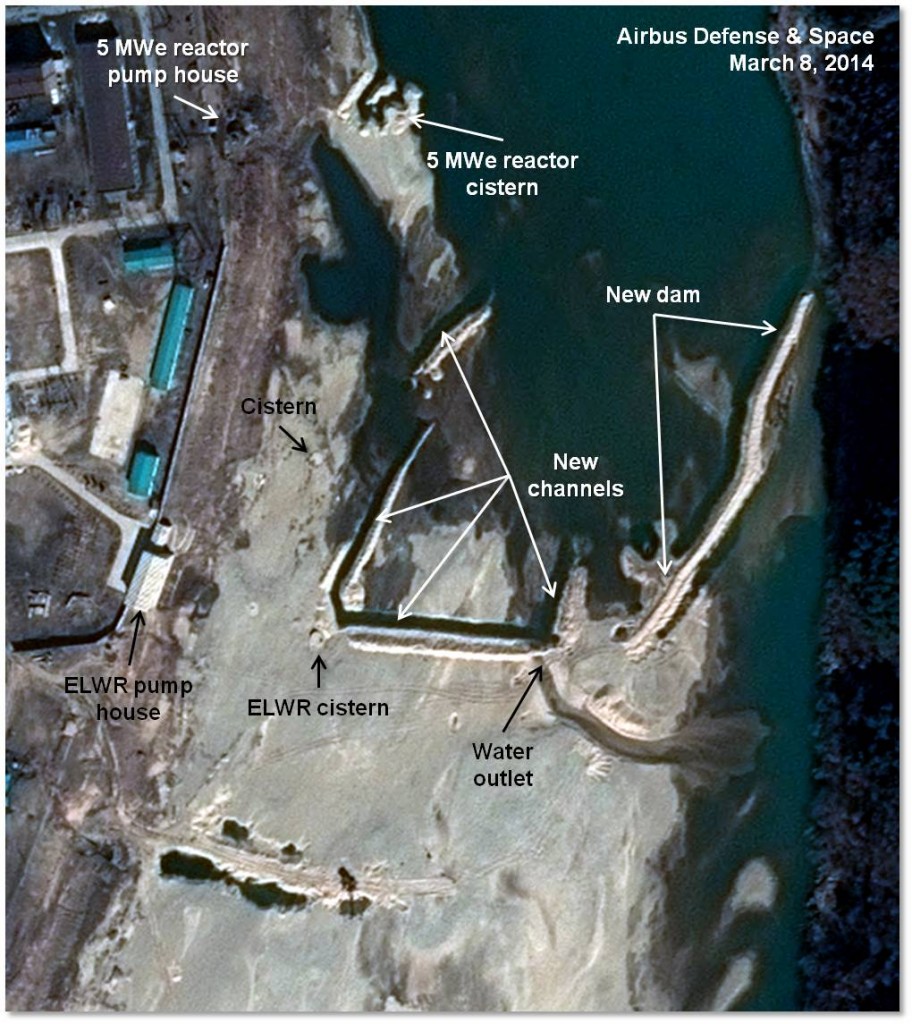
When the ELWR begins operating the turbine, hot waste water and steam will be dumped into the river in a manner similar to the 5 MWe reactor. The pipe runs from the generator hall to the riverbank where it will release the water into a new pond. Vehicle tracks run from the pond excavation to the new dam, suggesting the sand from there was used to help construct the dam (Figure 10).
Figure 10. Turbine Waste Water and Steam Disposal System.
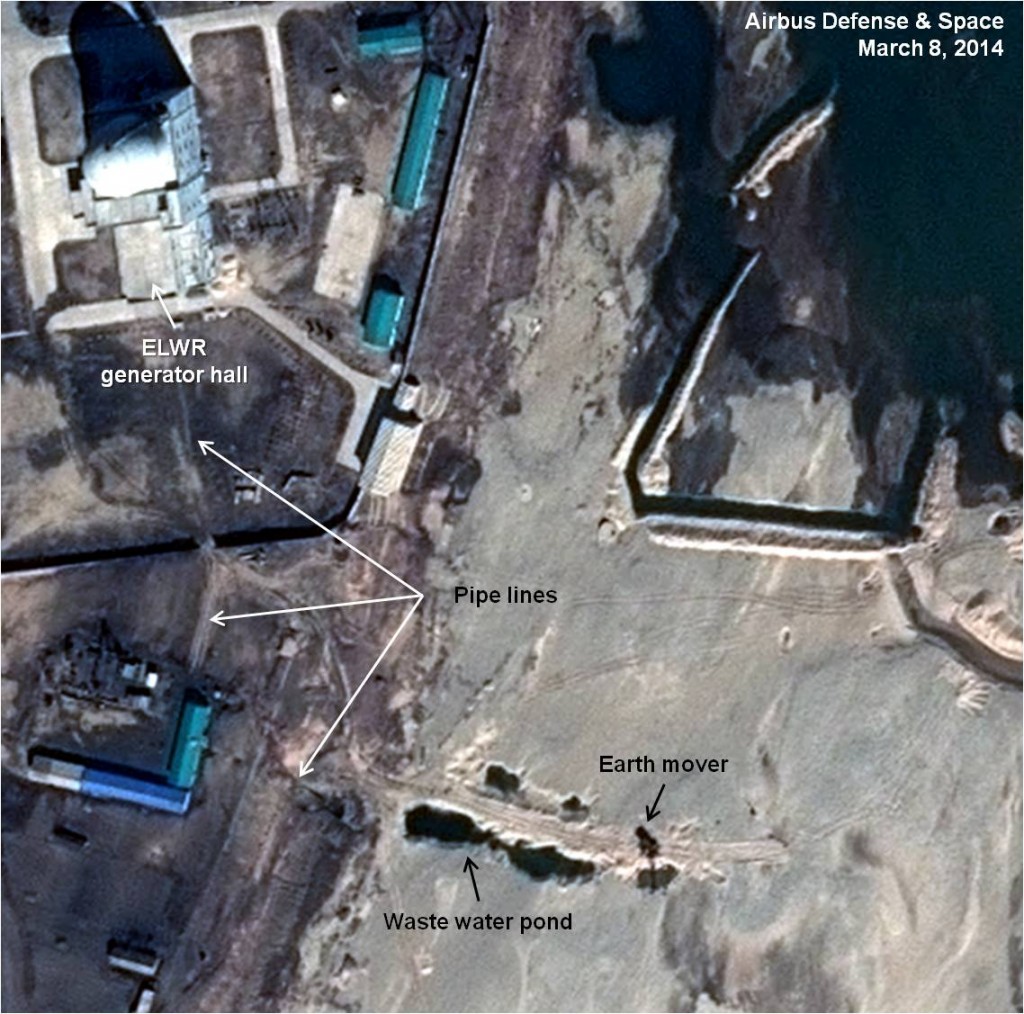
While the construction project was completed in a relatively short time period (about two months) and will continue the supply of cooling water to the 5 MWe reactor as well as ensure a reliable source for the start-up and operation of the ELWR, the new system will not survive a flood like that experienced in July 2013.
Conclusion
Recent problems at the Yongbyon facility with ensuring a supply of adequate river water for reactor cooling systems highlight a possible cause of a future accident. Analysis of the events at Yongbyon early this year demonstrates that the Kuryong River may not be able to provide a reliable and adequate source of water and that could in turn, cause damage to one or both of the reactors as well as a possible release of radioactive material. Moreover, if a major flood cuts off the cooling water supply to the reactors before they can be shut down, a major safety problem could occur.
ROK President Park Geun-hye, in her recent speech to the Nuclear Security Summit in The Hague, argued that a nuclear accident at the Yongbyon installation could cause damage greater than the meltdown of the Chernobyl reactor in 1986. Her assertion about the scale of a Yongbyon accident is technically unsupportable. Given the small size of the Yongbyon reactors, any damage is likely to be limited to the local area around the facility, releasing radioactive material into the atmosphere and river. Pyongyang’s likely lack of transparency in case of an accident, however, could create a regional crisis, panicking the public in surrounding countries and raising tensions with governments anxious for further information.
[1] A problem with the water intake for the secondary cooling system may have resulted in a decision to briefly shutdown the reactor in order to fix it. Alternatively, repairs could have been completed while operation continued at a lower power level.
[2] For further discussion, see Niko Milonopoulos and Edward D. Blandford, “‘Safety First—Not One Accident Can Occur’: Nuclear Safety and North Korea’s Quest to Build a Light Water Reactor,” 38 North, April 3, 2014, https://www.38north.org/2014/04/milonbland040314/.
